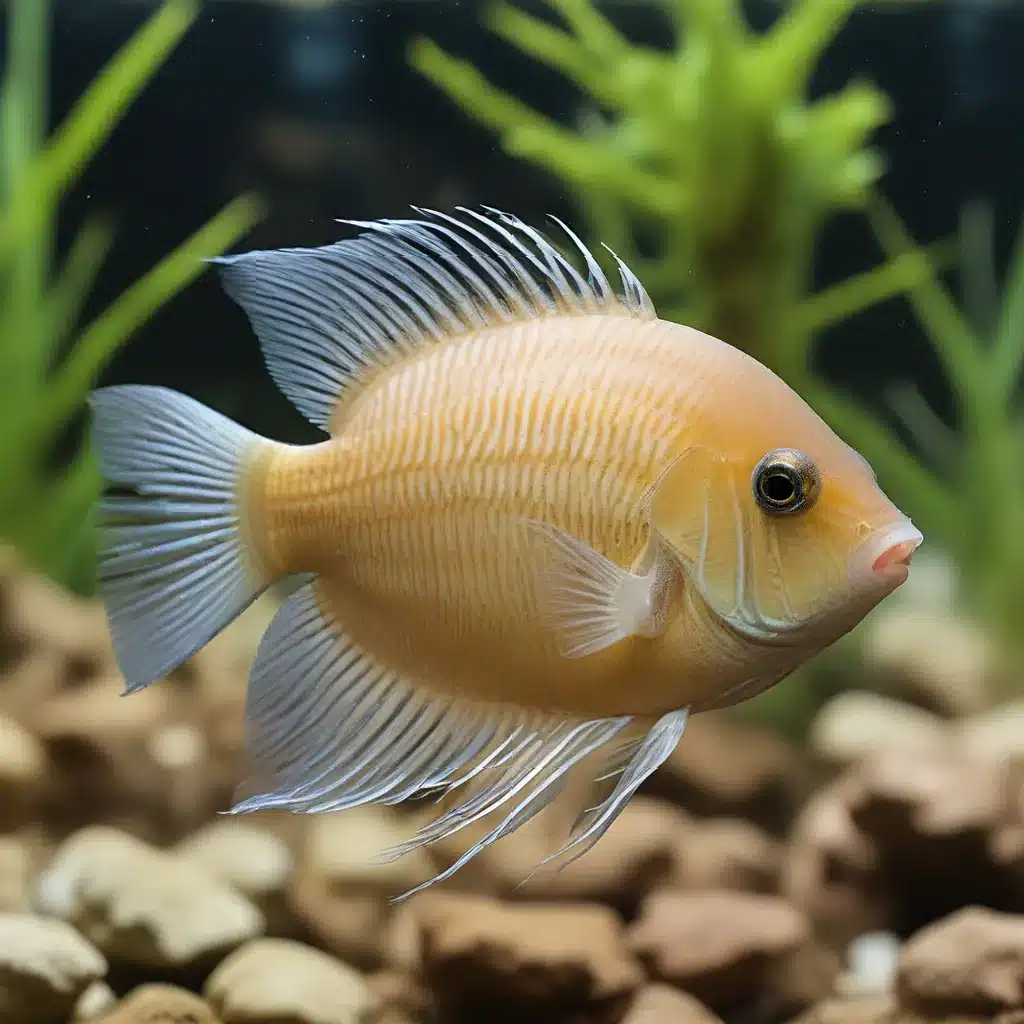
In the captivating realm of aquarium fish, few species capture the imagination quite like the gouramis. These remarkable creatures, belonging to the Anabantoidei suborder, are renowned for their unique labyrinth organ, which allows them to breathe atmospheric air. This adaptability, combined with their diverse array of shapes, sizes, and vibrant colors, makes gouramis a true delight for aquarists and hobbyists alike.
Exploring the Gourami Family: Diversity and Distinctions
The gourami family, scientifically known as the Osphronemidae, encompasses a wide range of species, each with its own distinct personality and care requirements. From the diminutive Dwarf Gourami to the majestic Giant Gourami, these fish come in a variety of forms, offering aquarists a wealth of options to choose from.
One of the most captivating aspects of gouramis is their ability to “walk” across the water’s surface, a behavior facilitated by their labyrinth organ. This specialized structure, located above their gills, enables them to take in atmospheric oxygen, allowing them to survive in low-oxygen environments. This adaptability makes gouramis an excellent choice for aquarists with a range of tank setups, from densely planted to minimalist.
Reddit’s gourami enthusiasts have long praised these fish for their friendly personalities and engaging behaviors. Many species, such as the Dwarf Gourami and the Blue Gourami, are known to interact with their owners, responding to hand movements and even accepting food from their caretakers.
Choosing the Right Gourami for Your Aquarium
When selecting a gourami for your aquarium, it’s essential to consider the specific species and its unique requirements. Some gouramis, like the Honey Gourami and the Dwarf Gourami, thrive in smaller, well-planted tanks, while others, such as the Giant Gourami, require larger, more spacious environments.
| Gourami Species | Max Size | Tank Size | Water Parameters |
|---|---|---|---|
| Dwarf Gourami | 2-3 inches | 10-20 gallons | pH: 6.0-7.5, Temp: 72-82°F |
| Honey Gourami | 2-3 inches | 10-20 gallons | pH: 6.0-7.5, Temp: 72-82°F |
| Blue Gourami | 4-6 inches | 20-30 gallons | pH: 6.5-7.5, Temp: 75-82°F |
| Giant Gourami | 12-16 inches | 100+ gallons | pH: 6.5-7.5, Temp: 75-82°F |
It’s also crucial to consider the tank’s water parameters, as gouramis thrive in slightly acidic to neutral pH levels and warm temperatures. Additionally, providing ample hiding places and live plants can help reduce stress and encourage natural behaviors in these fascinating fish.
Nurturing Gouramis: Feeding and Care Requirements
Gouramis are generally omnivorous, with a varied diet that includes both plant and animal matter. In the wild, they may feast on small invertebrates, algae, and even fallen fruits and leaves. In the aquarium setting, a high-quality flake or pellet food supplemented with frozen or freeze-dried foods, such as brine shrimp or bloodworms, can provide a well-rounded and nutritious diet.
It’s essential to remember that gouramis are territorial and can be aggressive towards their own kind, particularly during breeding and spawning periods. When keeping multiple gouramis, it’s recommended to provide ample space and hiding spots to minimize potential conflicts.
Aquarium enthusiasts have also discovered that certain gourami species, such as the Blue Gourami, can make excellent community tank inhabitants when paired with peaceful, non-aggressive tankmates. By carefully selecting compatible species and maintaining a harmonious environment, aquarists can enjoy the vibrant colors and engaging behaviors of these remarkable fish.
Unlocking the Secrets of Gourami Aquascaping
Gouramis, with their diverse shapes and sizes, can be true assets in the art of aquascaping. These fish can thrive in a variety of aquarium environments, from the lush, heavily planted setups to the more minimalist, nature-inspired designs.
Dwarf Gouramis, for example, are well-suited for nano tanks or desktop aquariums, where their vibrant hues and active behaviors can create a mesmerizing focal point. Larger species, such as the Blue Gourami and the Giant Gourami, can serve as the centerpiece in larger, more expansive aquascapes, complementing the surrounding vegetation and decor.
When designing a gourami-centric aquascape, it’s crucial to consider the specific needs of the chosen species. Providing ample hiding spots, floating plants, and dense vegetation can help recreate the natural habitats of these fish and reduce their stress levels. Additionally, incorporating driftwood, rocks, and other natural elements can create a visually stunning and biologically enriching environment.
Aquarium enthusiasts have also discovered the joy of interactive aquascaping, where they can design and decorate their tanks to encourage natural behaviors in their gouramis, such as bubble nesting and courtship displays.
Conclusion: Embracing the Gourami’s Allure
As you delve deeper into the fascinating world of gouramis, you’ll quickly discover why these unique labyrinth fish have captivated the hearts and aquariums of hobbyists worldwide. From their vibrant colors and engaging personalities to their adaptability and suitability for a wide range of aquarium setups, gouramis truly offer something for every aquarist.
By understanding the specific care requirements and aquascaping techniques tailored to these remarkable fish, you can create a thriving, visually stunning aquarium that showcases the beauty and wonder of the gourami family. So, dive in and unlock the secrets of these captivating creatures – your aquarium and its inhabitants will thank you.
Remember, at King Aquarium, we’re here to guide you on your aquatic journey, providing expert advice and high-quality products to help you create the perfect home for your gouramis and other aquarium inhabitants.

